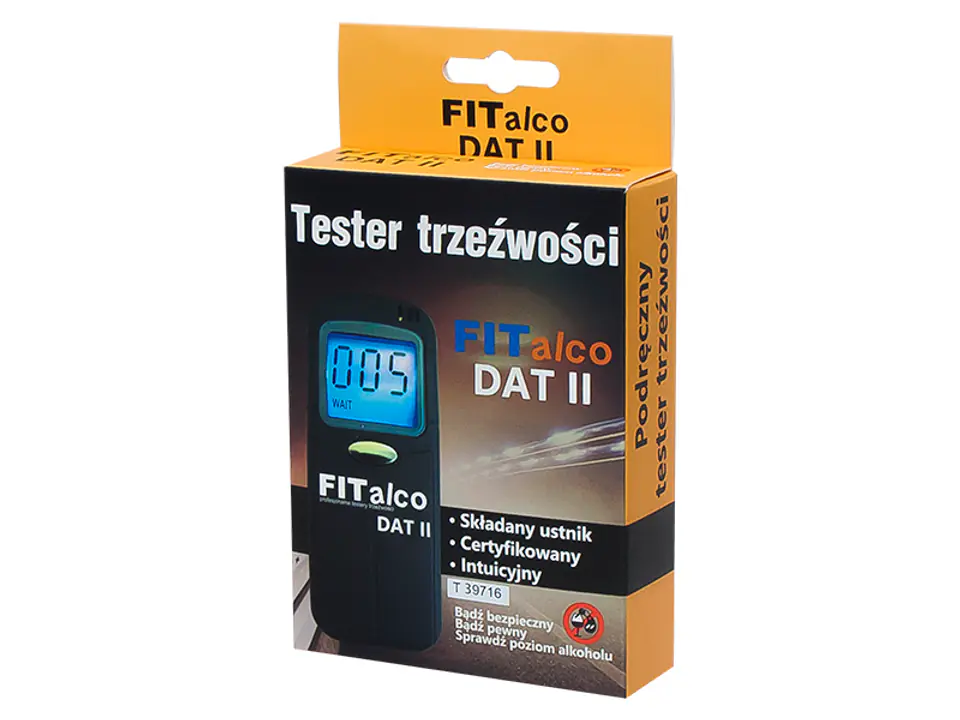You can always have the FITalco DAT II breathalyzer with you – thanks to its small size you can conveniently transport
it in your pocket. At the same time, it ensures the quality and precision of measurement, not inferior to much more expensive sobriety testers. The backlit screen allows you to easily measure after dark. To conduct the test, place one of the mouthpieces in the blowing hole. Press and hold the TEST button until the device turns on – WAIT will appear on the screen, followed by a countdown from 10 to 0. Then the display will show the inscription BLOW and C-C-C. Take a deep breath and blow air evenly into the mouthpiece for 3 to 5 seconds. The measurement result will be displayed for a few seconds. If the measuring range is exceeded, the HI inscription is displayed. The device turns off automatically.
Product advantages:
- Pocket dimensions - you can always have it with you
- 2-year warranty
- Simple, intuitive operation
- Wide measuring range: from 0‰ to 4‰
- Precision solid-state sensor
Technical Specifications:
- Display: LCD with backlight
- Dimensions: 105x45x24mm
- Weight: 90g without batteries
- Sensor type: solid state
- Measurement method: air sample in ‰ (g/l)
- Measurement range: 0.00‰ to 4.00‰ (i.e. 0.00 to 2.00mg/l or 0.00 to 0.40 BAC)
- Accuracy: +/- 0.15 for 0.50% BAC
- Preparation time: 15s
- Result delivery time: up to 10s
- Exhaust time during measurement: 10s
- Time to retest: less than 60s
- Operating temperature: 10°C – 40°C
- Power supply: 2 x AAA alkaline battery (1.5V)
- Battery life: about 200 measurements
- Calibration: every 6 months
The set includes:
Breathalyzer FITalco DAT II
5 pcs. Mouthpieces
Manual

